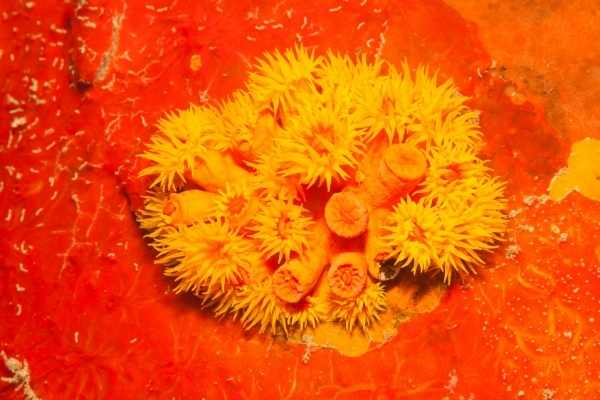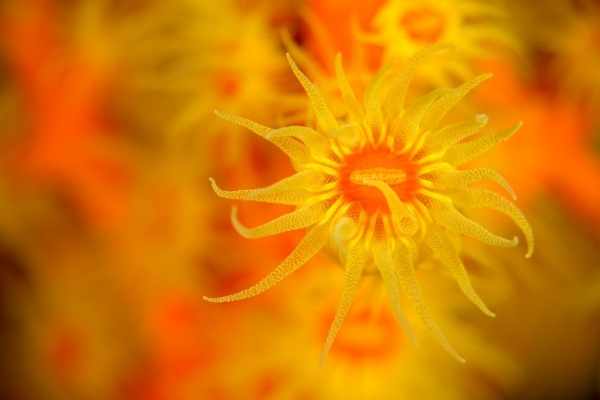[ad_1]
The Sun Coral is an awesome and popular large polyp stony corals (LPS coral) that is often sought after in the aquarium hobby, because of its bright orange-yellow, “sunny” polyps. There are more than just one species of sun coral out there, so you may sometimes see them listed as Tubastraea, which is their genus.
Table of contents
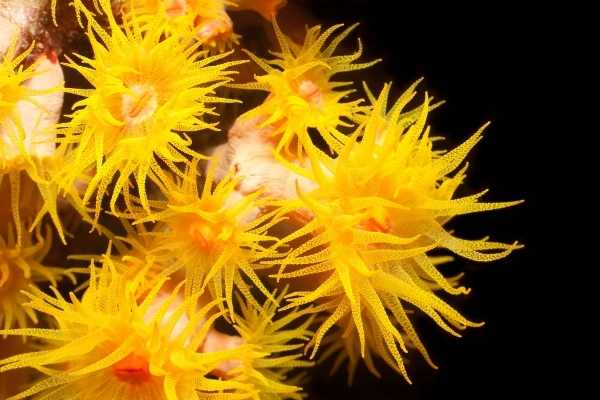
Sun coral and tube coral are the most common names
Introduction to Tube Coral care
After one look at these Large polyp stony (LPS) corals, you will totally understand how they get their common name. The polyps are round, fleshy, and bright yell0w and orange and look a bit like the sun.
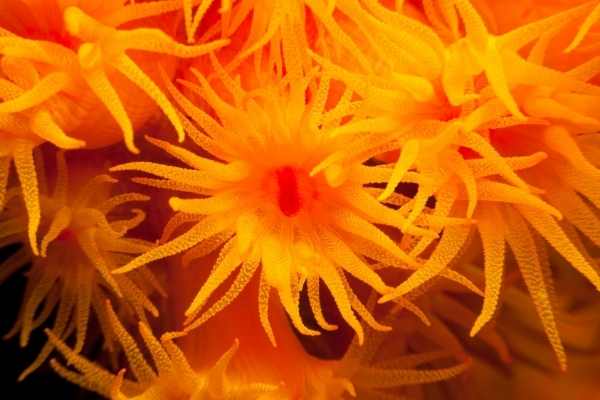
Despite the sunny appearance, this Tube coral is a non-photosynthetic coral
What is remarkably ironic about these beautiful invertebrates is that they are non-photosynthetic, which means they don’t get any of their nutrition from the light of the sun, or in your case, from your reef tank lights.
That makes them simultaneously easier to care for and more challenging, at the same time. Easier, in that you don’t have to worry about acclimation to lighting, adequate PAR and trying to ensure proper placement, but harder in that if you don’t feed them regularly, they will die.
Is it a coral, or is it a Muppet? Decide for yourself:
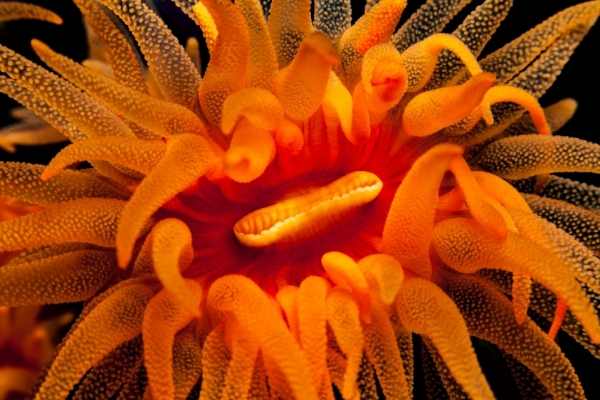
Large Polyp Stony Coral…or Animal, the Muppet drummer?
You’ll have to decide for yourself, but I say Muppet.
Quick facts about Tube coral care
- Scientific name: Tubastraea species
- Common names: Sun coral, Tube coral
- Coral type: Large polyp stony
- Care level: Moderate
- Placement: Lower, darker areas of your tank
- Aggression: Low, peaceful, won’t harm other corals
- Feeding: meaty foods, a few times a week, more if you’re willing to put in the time
- Lighting: Low light or no light needed
- Flow: Moderate flow
Natural habitat in the ocean
Sun corals are usually found in tropical and subtropical rocky and coral reefs all across the world’s oceans and seas. They are most commonly spotted in deeply shaded areas such as crevices, pier pilings, or caves. They also build their colonies on artificial surfaces like pillars or shipwrecks.
While all coral polyps are dependent on the flow of the ocean to bring dinner to them, the sun coral, being non-photosynthetic, is completely dependent on capturing food to survive, unable to get a free meal from commensal zooxanthellae.
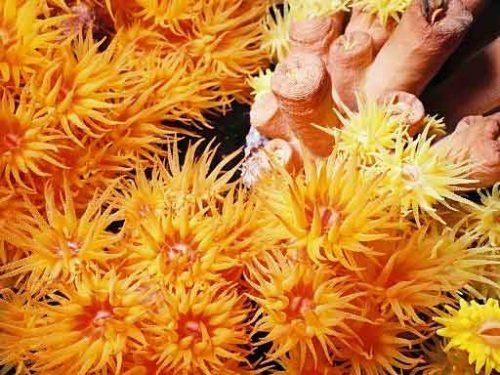
note the large fleshy tubular polyp shape extending from a stony base
Sun coral care
Most people who have kept Tubastraea corals in their tanks would say this is a moderately difficult species. Unfortunately, some newer, relatively less-experienced aquarium-keepers have had trouble getting them to open up and accept foods.
Sun corals are not aggressive and will do well with most other coral species if given sufficient room.
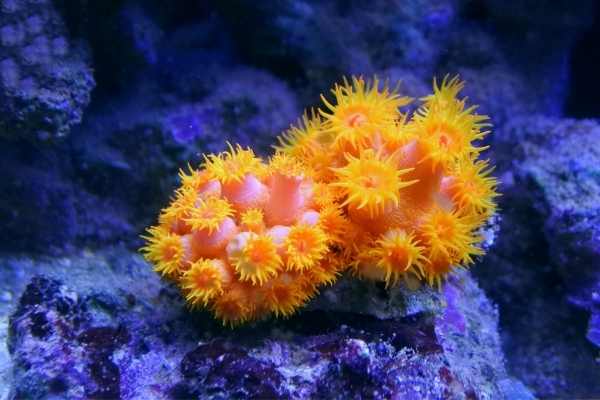
Best placed in the lower, darker regions of your aquarium, as long as it has sufficient water flow
Tube coral placement
Because they are non-photosynthetic, you can place them successfully in dimly lit regions of the tank. In many tanks, that means placing them close to the bottom and towards the corners or in shaded areas.
Consider elevating your sun corals on the live rock if you keep any animals like the engineer or other gobies likely to create a sandstorm that might bury your precious sun corals.
They are also easily damaged. When first placing them in your tank, handle them very gently and try your best to touch and hold them by the stony base at the bottom, otherwise you may cause damage to thelarge fleshy polyps.
Water parameters
Sun polyps don’t have any particularly distinct needs, in terms of ideal water parameters. So the standard water parameters are appropriate.
- Temperature: High 70s to low 80s Fahrenheit
- Salinity: 1.025 specific gravity
- pH: 8.1-8.4
- Ammonia, Nitrites, Nitrates: close to zero parts per million
You can find out more about those water parameters here.
How to feed tube coral and what to feed
Sun corals are masters at capturing prey. They will greedily accept Mysis shrimp, brine shrimp, copepods, rotifers as well as meaty foods like pieces of clam, chopped fish or other seafood (scallops, shrimp, etc.).
The key is to have the food chopped up into small enough pieces.
A few quick tips
- Unless you have a tank full of other non-photosynthetic corals, you will want to target-feed your sun corals, which essentially means using a turkey baster, Sea Squirt or Julian’s thing to direct an underwater puff of food at the open feeding polyps.
- This brings up another important point–many people report that this coral’s preferred time to eat is after lights out. Over time, you can coax them out earlier, but warned that the sun coral may extend your bedtime (depending on when you have lights out.
- You could feed them small amounts of food as often as you like, but if you’re looking for a recommendation–start with feeding them 3-4 times a week. Assess whether they are happy and growing with that frequency
- When feeding the tube coral, try to get a meaty morsel to land on each individual polyp mouth.
If you have the time and are willing to devote it to feeding your corals, you could increase the frequency up to ~ daily, but this is not a requirement.
You can coax a ‘sleeping’ sun coral into feeding mode by priming the process with an initial small burst of food directed at the closed polyps. You can then wait a few minutes and the feeding polyps should extend. After that, you may feed when ready.
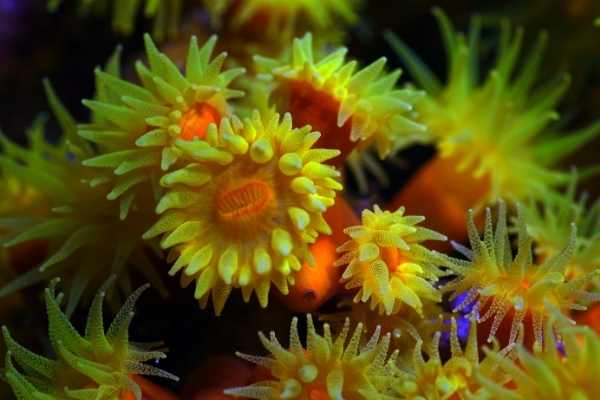
This is a large polyp stony coral–the large fleshy tube shaped coral polyps sit on top of a calcium carbonate skeleton. So fragging is most easily done by using a tile saw or rotary tool, to saw a clean cut right through the skeleton, between polyps.
If you don’t have a tile saw or rotary tool, you could potentially use a hammer and chisel, although that seems a bit risky. Take a look at this video to see how a tile saw would be used.
Using a rotary tool to frag would be similar, just a little more manual
To learn how to frag corals, get started here.
What to read next
The Tube coral is unrivaled in pure bold beauty, so it is a little difficult to recommend other similar corals–if you’re looking for electric colors and large fleshy polyps, you should check out:
While less colorful you might also enjoy learning about:
Duncan corals
Conclusions
With a little time, patience, and moderate aquarium skills, these beautiful corals are a great addition to a mature tank. The keys are consistent feeding, sufficient calcium levels and giving them enough room to grow.
Your turn—have you kept the sun coral? What has your experience with them been? Please leave a comment below.
References
Borneman, Eric H. Aquarium Corals. Microcosm Ltd; 1st Printing Edition (March 1, 2001
Ulrich III, Albert B. How to Frag Corals: Step-by-step guide to coral propagation and filling your frag tank with thriving polyps. www.SaltwaterAquariumBlog.com (January 20, 2015).
Ulrich III, Albert B. The New Saltwater Aquarium Guide.www.SaltwaterAquariumBlog.com (April 8, 2014)
[ad_2]
Source link

